Themed collection Nanoscale 2023 Emerging Investigators

Nanoscale profiles: contributors to the Emerging Investigators 2023 issue
Our 2023 Emerging Investigators collection gathers some of the best research being conducted by nanoscientists in the early stages of their independent career. Congratulations to all of the researchers featured!

Nanoscale, 2023,15, 12426-12454
https://doi.org/10.1039/D3NR90104A
Bayesian optimisation for efficient material discovery: a mini review
Bayesian optimisation (BO) has been increasingly utilised to guide material discovery.

Nanoscale, 2023,15, 10975-10984
https://doi.org/10.1039/D2NR07147A
All-inorganic perovskite solar cells featuring mixed group IVA cations
The fundamental structures and solar-cell performance of all-inorganic ABX3 perovskites that contain mixed group IVA cations at the B sites are examined comprehensively, pointing to an interesting direction in exploring perovskites with reduced Pb inclusion.
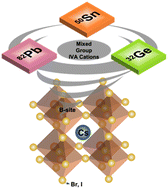
Nanoscale, 2023,15, 7249-7260
https://doi.org/10.1039/D3NR00133D
Alternatives to water oxidation in the photocatalytic water splitting reaction for solar hydrogen production
We summarize how various photo-oxidation reactions, rather than water oxidation, can be integrated with proton reduction in photocatalysis to generate H2 while producing valuable chemicals for a sustainable chemical industry and eliminating waste.
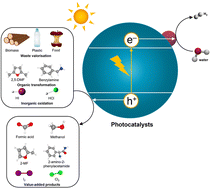
Nanoscale, 2023,15, 6521-6535
https://doi.org/10.1039/D3NR00260H
Retrospective insights into recent MXene-based catalysts for CO2 electro/photoreduction: how far have we gone?
This state-of-the-art review of MXene-based catalysts in CO2 electro/photoreduction places an emphasis on synthesis approaches, surface termination modulation, heterostructure engineering and reaction mechanisms.
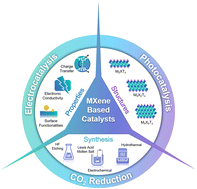
Nanoscale, 2023,15, 6536-6562
https://doi.org/10.1039/D2NR05718B
Reconfigurable scaffolds for adaptive tissue regeneration
A minireview of reconfigurable scaffolds for adaptive tissue regeneration.

Nanoscale, 2023,15, 6105-6120
https://doi.org/10.1039/D3NR00281K
Recent developments in lead-free bismuth-based halide perovskite nanomaterials for heterogeneous photocatalysis under visible light
This mini-review presents a brief overview of recent progress in bismuth-based halide perovskite (BHP) nanomaterials for heterogeneous photocatalysis under visible light, including the synthesis and physical–chemical properties of advanced BHPs.
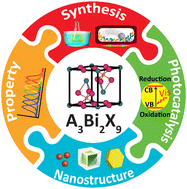
Nanoscale, 2023,15, 5598-5622
https://doi.org/10.1039/D3NR00124E
Endocytosis-mediated redistribution of antibiotics targets intracellular bacteria
Endocytosis-mediated redistribution of antibiotics sheds light on the development of novel delivery platforms and alternative strategies to combat intracellular bacterial pathogens.
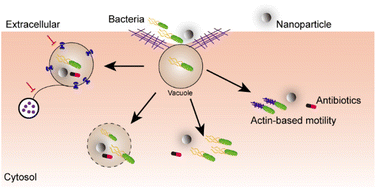
Nanoscale, 2023,15, 4781-4794
https://doi.org/10.1039/D2NR05421C
Cathode materials for halide-based aqueous redox flow batteries: recent progress and future perspectives
Various electrode materials and relevant modification approaches used for zinc-halogen, hydrogen-halogen, and polysulfide-halogen ARFB systems are summarized, and the relevant mechanisms and regulatory means are illustrated.
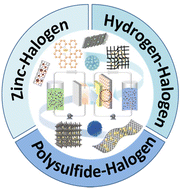
Nanoscale, 2023,15, 4250-4260
https://doi.org/10.1039/D2NR07291B
Pathway of transient electronics towards connected biomedical applications
The review discusses triggering strategies for transient electronics. Connected biomedical applications with diagnostic and therapeutic capabilities of transient electronics have been summarized.
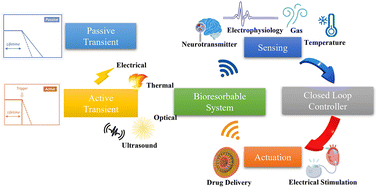
Nanoscale, 2023,15, 4236-4249
https://doi.org/10.1039/D2NR06068J
Perspectives on oxide heterostructures – the curious case of γ-Al2O3/SrTiO3
The γ-Al2O3/SrTiO3 heterostructure has emerged as a multifunctional material system. Here, I review the highlights and propose five future directions.
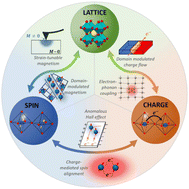
Nanoscale, 2023,15, 3704-3712
https://doi.org/10.1039/D2NR07172J
Copper and silver nanowires for CO2 electroreduction
Copper and silver nanowires as novel electrocatalysts for the electroreduction of CO2.
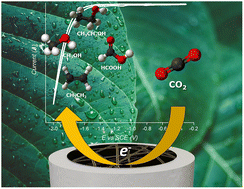
Nanoscale, 2023,15, 3693-3703
https://doi.org/10.1039/D2NR06687D
Ligand effects on the photoluminescence of atomically precise silver nanoclusters
This mini-review focuses on the recent understanding of the impacts of ligands on the photoluminescence properties of atomically precise silver nanoclusters.
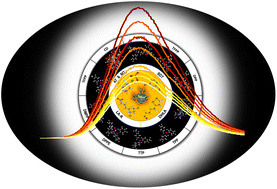
Nanoscale, 2023,15, 3120-3129
https://doi.org/10.1039/D2NR06619J
Mass tag-encoded nanointerfaces for multiplexed mass spectrometric analysis and imaging of biomolecules
This minireview summarizes the structure, composition and working principles of mass tag-encoded nanointerfaces, along with their biological applications in multiplex mass spectrometry (MS) analyses.
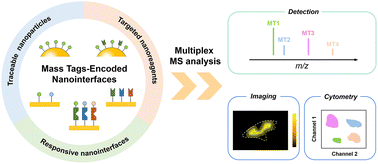
Nanoscale, 2023,15, 2529-2540
https://doi.org/10.1039/D2NR06020E
Chiral inorganic nanomaterials for biological applications
This review summarizes the works regarding chiral inorganic nanomaterials with bio-functions and bio-applications, which can deep our understanding on chiral inorganic nanomaterials' construction principles and biological functional properties.
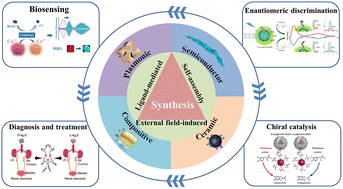
Nanoscale, 2023,15, 2541-2552
https://doi.org/10.1039/D2NR05689E
Protein-mimetic peptoid nanoarchitectures for pathogen recognition and neutralization
This mini-review highlights the design and synthesis of peptoid-based nanomaterials for pathogen-related healthcare applications.

Nanoscale, 2023,15, 975-986
https://doi.org/10.1039/D2NR05326H
Low-temperature lithium-ion batteries: challenges and progress of surface/interface modifications for advanced performance
This minireview summarizes the progress in the rational design of surface/interface modifications for low-temperature lithium-ion batteries.
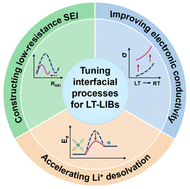
Nanoscale, 2023,15, 987-997
https://doi.org/10.1039/D2NR06294A
Active therapy based on the byproducts of micro/nanomotors
This minireview summarizes the current progress in active therapy based on the byproducts produced or generated during the motion process of micro/nanomotors.
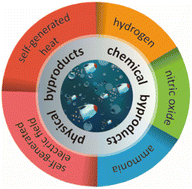
Nanoscale, 2023,15, 953-962
https://doi.org/10.1039/D2NR05818A
Nanoporous ices: an emerging class in the water/ice family
Nanoporous ice is an emerging class in the water/ice family, also named WOF (Water Oxygen-vertex Framework), which is stable under negative pressure. We summarize recent progress and important milestones and present our perspectives on future studies of nanoporous ices.
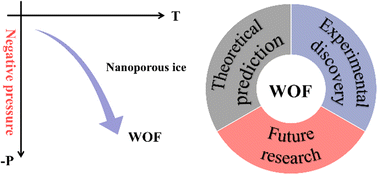
Nanoscale, 2023,15, 92-100
https://doi.org/10.1039/D2NR05759J
Emerging biotransduction strategies on soft interfaces for biosensing
As a lab-on-soft biochip providing accurate and timely biomarker information, wearable biosensors can satisfy the increasing demand for intelligent e-health services, active disease diagnosis/therapy, and huge bioinformation data.

Nanoscale, 2023,15, 80-91
https://doi.org/10.1039/D2NR05444B
Membranes prepared from graphene-based nanomaterials for water purification: a mini-review
Here, we present the recent progress in the synthesis, property–performance correlation, and novel work on graphene-based nanomaterials (GBnMs) in water treatment technologies, specifically nanofiltration and solar desalination applications.

Nanoscale, 2022,14, 17871-17886
https://doi.org/10.1039/D2NR05328D
Organ-on-chip systems as a model for nanomedicine
Organ-on-chip systems recapitulate the form and function of biological organs in highly controlled in vitro conditions and have already been used for testing a variety of nanoparticles. Can they unlock the translational potential of nanomedicine?

Nanoscale, 2023,15, 9927-9940
https://doi.org/10.1039/D3NR01661G
Transformable nanodrugs for overcoming the biological barriers in the tumor environment during drug delivery
Transformable nanodrugs with changeable sizes and shapes allow for overcoming multiple biological barriers for enhanced drug delivery. This review aims to present an overview of the most recent development of smart nanodrugs in this emerging field.

Nanoscale, 2023,15, 8532-8547
https://doi.org/10.1039/D2NR06621A
A review on accelerated development of skin-like MXene electrodes: from experimental to machine learning
Foreshadowing future needs has catapulted the progress of skin-like electronic devices for human–machine interactions.

Nanoscale, 2023,15, 8110-8133
https://doi.org/10.1039/D2NR05969J
Mercury chalcogenide colloidal quantum dots for infrared photodetection: from synthesis to device applications
A comprehensive review on Hg chalcogenide colloidal quantum dot infrared photodetectors, with the essential progress of synthesis methods, property control, device engineering, focus plane array integration and innovative applications.

Nanoscale, 2023,15, 6476-6504
https://doi.org/10.1039/D2NR07309A
Immunomodulatory nanotherapeutic approaches for periodontal tissue regeneration
This review discusses the important role of immune cells in the management of periodontitis and the nanotherapeutic methods for immunoregulated periodontal tissue regeneration.
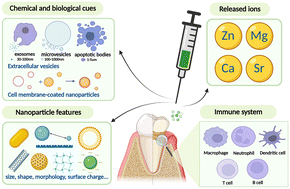
Nanoscale, 2023,15, 5992-6008
https://doi.org/10.1039/D2NR06149J
The material–microorganism interface in microbial hybrid electrocatalysis systems
This review presents a comprehensive summary of the material–microorganism interface in microbial hybrid electrocatalysis systems.

Nanoscale, 2023,15, 6009-6024
https://doi.org/10.1039/D3NR00742A
Recent progress in bio-voltage memristors working with ultralow voltage of biological amplitude
This review summarizes the development of memristors with functional voltages in the biological region (<120 mV), covering the aspects of device material composition, performance, working mechanism, and potential applications.
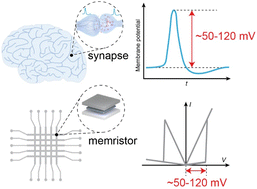
Nanoscale, 2023,15, 4669-4681
https://doi.org/10.1039/D2NR06773K
Recent achievements toward the development of Ni-based layered oxide cathodes for fast-charging Li-ion batteries
This review enhances a fundamental understanding of the degradation mechanisms of Ni-based layered cathodes under fast-charging conditions from atomic to electrode scales. Design strategies for enhancing fast-charging performance are also suggested.

Nanoscale, 2023,15, 4195-4218
https://doi.org/10.1039/D2NR05701H
Wearable chemical sensors based on 2D materials for healthcare applications
We provided an overview of recent advances in 2D-material-based wearable chemical sensors for healthcare applications. We also explored the challenges and opportunities associated with designing and implementing 2D wearable chemical sensors.
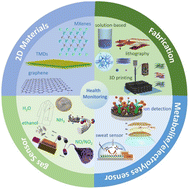
Nanoscale, 2023,15, 3079-3105
https://doi.org/10.1039/D2NR05447G
Biomolecules incorporated in halide perovskite nanocrystals: synthesis, optical properties, and applications
Biomolecules have been integrated in halide perovskite nanocrystals (HPNCs), impacting their formation, physicochemical properties, and stability. We address the biomolecule's role in modulating HPNCs properties and extending their applications.
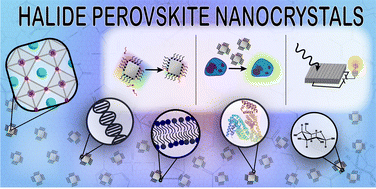
Nanoscale, 2023,15, 2997-3031
https://doi.org/10.1039/D2NR05565A
Non-〈111〉-oriented semiconductor nanowires: growth, properties, and applications
This review paper provides an overview of the growth, properties, and applications of non-〈111〉-oriented semiconductor nanowires for future electronic and optoelectronic devices.
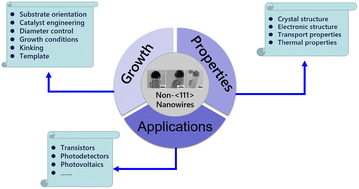
Nanoscale, 2023,15, 3032-3050
https://doi.org/10.1039/D2NR06421A
Toward a new generation of permeable skin electronics
This article provides a comprehensive and systematic review of permeable skin-mountable electronics, with a focus on representative porous materials and structures, device properties, and latest applications.

Nanoscale, 2023,15, 3051-3078
https://doi.org/10.1039/D2NR06236D
Recent progress in emergent two-dimensional silicene
The family of silicene materials has emerged with various fascinating properties and applications.
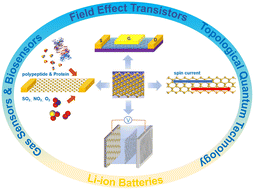
Nanoscale, 2023,15, 2982-2996
https://doi.org/10.1039/D2NR05809J
Recent progress on the synthesis of metal alloy nanowires as electrocatalysts
This work reviews the chemical approaches to synthesizing metal alloy nanowires, and briefly discusses their applications as electrocatalysts.

Nanoscale, 2023,15, 2488-2515
https://doi.org/10.1039/D2NR06090F
Two-dimensional nanomaterials: synthesis and applications in photothermal catalysis
This review summarized recent advances in various 2D nanomaterials with emphasis on the relevant mechanism of photothermal catalysis, discussing the synthesis methods and photothermal applications in the environmental and energy fields.
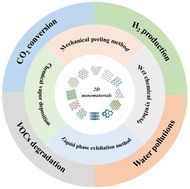
Nanoscale, 2023,15, 2455-2469
https://doi.org/10.1039/D2NR06092B
Bioorthogonal nanozymes: an emerging strategy for disease therapy
The highlights for preparing bioorthogonal nanozymes and their therapeutic applications are reported.

Nanoscale, 2023,15, 41-62
https://doi.org/10.1039/D2NR05920G
Fabrication of magnetic nanoprobes for ultrahigh-field magnetic resonance imaging
This review highlights the design, synthesis, and contrasting mechanisms of magnetic nanoprobes for high-performance ultrahigh-field magnetic resonance imaging.
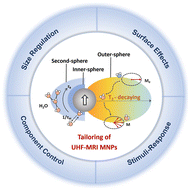
Nanoscale, 2022,14, 17483-17499
https://doi.org/10.1039/D2NR04979A
Recent advances in high-crystalline conjugated organic polymeric materials for photocatalytic CO2 conversion
This review summarizes the current advanced high-crystalline conjugated organic polymeric materials for photocatalytic CO2 conversion.

Nanoscale, 2022,14, 15217-15241
https://doi.org/10.1039/D2NR04727F
Advances in nanobiotechnology-propelled multidrug resistance circumvention of cancer
Multidrug resistance (MDR) is one of the main reasons for the failure of tumor chemotherapy and has a negative influence on the therapeutic effect.
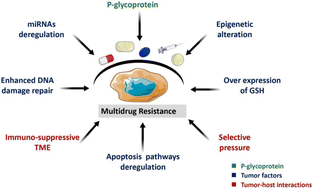
Nanoscale, 2022,14, 12984-12998
https://doi.org/10.1039/D2NR04418H
Towards the fastest kinetics and highest uptake of post-functionalized UiO-66 for Hg2+ removal from water
UiO-66-A.T. removed Hg2+ from water with a maximum adsorption capacity of 691 mg g−1, a rate constant of 0.28 g mg−1 min−1, and a selectivity of 99.4%.
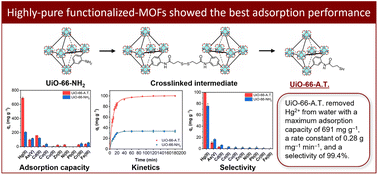
Nanoscale, 2023,15, 10558-10566
https://doi.org/10.1039/D3NR01959D
Simultaneous observation of the spatial and temporal dynamics of single enzymatic catalysis using a solid-state nanopore
We developed a bipolar SiNx nanopore for the observation of single-molecule heterogeneous enzymatic dynamics.
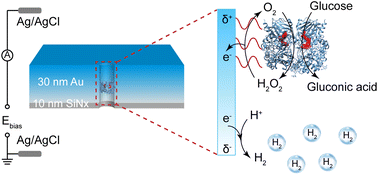
Nanoscale, 2023,15, 7261-7266
https://doi.org/10.1039/D2NR06361A
Controlling the durability and optical properties of triplet–triplet annihilation upconversion nanocapsules
In this nanoparticle synthesis, the feed quantities of TEOS and PEG-silane greatly impact the formation of the external silica shell used to encapsulate upconversion materials, as well as the accessible upconverted photoluminescence.
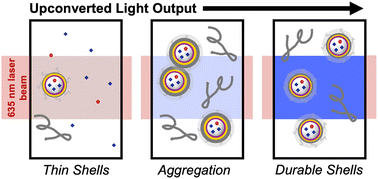
Nanoscale, 2023,15, 6880-6889
https://doi.org/10.1039/D3NR00067B
Investigation of local distortion effects on X-ray absorption of ferroelectric perovskites from first principles simulations
We investigate ferroelectric local distortion in BaTiO3 with two widely used computational approaches with different treatments of many-body excitation effects.
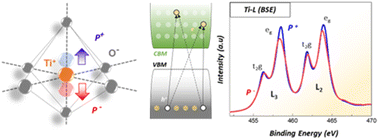
Nanoscale, 2023,15, 5193-5200
https://doi.org/10.1039/D2NR05732H
The effect of tensile strain in Pd–Ni core–shell nanocubes with tuneable shell thickness on urea electrolysis selectivity
The lattice strain effect in Pd–Ni core–shell nanocubes on the selectivity of urea electrolysis is elucidated, which can facilitate catalyst design for efficient urea waste treatment and concomitant cathodic hydrogen production or CO2 reduction.

Nanoscale, 2023,15, 5181-5187
https://doi.org/10.1039/D2NR05950A
Single-crystalline Mg-substituted Na4Mn3(PO4)2P2O7 nanoparticles as a high capacity and superior cycling cathode for sodium-ion batteries
The NM2.7Mg0.3PP@C cathode displays a considerable discharge capacity, an improved rate capability, superior cycling performance and stable structure.
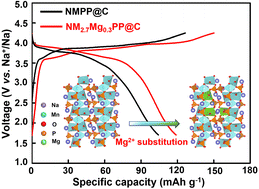
Nanoscale, 2023,15, 4830-4838
https://doi.org/10.1039/D2NR05442F
Measurements of single-molecule electromechanical properties based on atomic force microscopy fixed-junction technique
A fixed nanogap between electrodes is pre-set and the simultaneous electrical and mechanical properties of a single molecule are obtained from the time-resolved changes in both the current and force induced by stochastic metal–molecule binding.
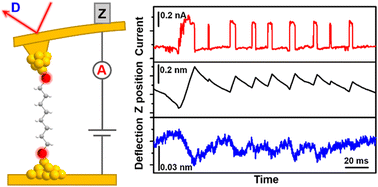
Nanoscale, 2023,15, 4277-4281
https://doi.org/10.1039/D2NR06074D
Assembly of biomimetic microreactors using caged-coacervate droplets
Caged microreactors were constructed by Pickering stabilization of complex coacervate droplets with silica nanoparticles. The size of the nanoparticles determined the molecular transport into the microreactors.

Nanoscale, 2023,15, 2561-2566
https://doi.org/10.1039/D2NR05101J
Electronic structure of cobalt valence tautomeric molecules in different environments
A joint spectroscopy and ab initio study identifies electronic orbitals of valence tautomeric complexes on different semiconducting polymers, including a spin-polarized ligand-to-metal charge transfer state that spans the entire molecular plane.
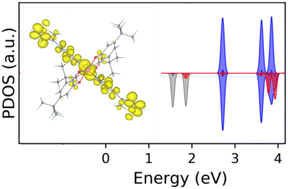
Nanoscale, 2023,15, 2044-2053
https://doi.org/10.1039/D2NR06834F
Porous carbon-based metal-free monolayers towards highly stable and flexible wearable thermoelectrics and microelectronics
Two graphene-like macrocyclic monolayers are proposed with high strength and ultrahigh carrier mobilities and ZT values, having promising applications in mechanical enhancement, microelectronics, wearable electronics and thermoelectric devices.

Nanoscale, 2023,15, 1522-1528
https://doi.org/10.1039/D2NR05443D
A cascade nanozyme with antimicrobial effects against nontypeable Haemophilus influenzae
A cascade nanozyme with glucose oxidase and haloperoxidase activities was designed and synthesized, which was shown to generate antiseptic HOBr from a ubiquitous non-ROS, O2. It successfully inhibited growth of a bacterial pathogen and its biofilm.

Nanoscale, 2023,15, 1014-1023
https://doi.org/10.1039/D2NR04306H
Mapping the reaction zones for CdTe magic-sized clusters and their emission properties
Using five reaction parameters as “reaction coordinates”, we mapped out the “reaction zones” that produce CdTe magic-sized clusters (MSCs) and quantum dots (QDs). The photoluminescent properties of CdTe MSCs and QDs were also investigated.

Nanoscale, 2023,15, 114-121
https://doi.org/10.1039/D2NR05808A
Mucus-inspired organogel as an efficient absorbent and retention agent for volatile organic compounds
Nasal mucus plays a key role in the sense of smell by absorbing and transporting chemicals to olfactory receptors.

Nanoscale, 2023,15, 101-108
https://doi.org/10.1039/D2NR05522H
Structure and assembly of a hexanuclear AuNi bimetallic nanocluster
An Au4Ni2 nanocluster containing a square-planar [PPh2–Au–S–Au]2 ring and two nickel-pincer arms was found to be assembled by noncovalent interactions. The assembly-dependent properties that are distinct from the octahedral M6 clusters were shown.
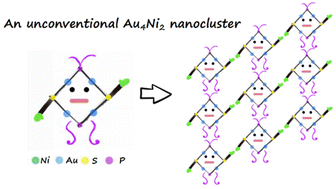
Nanoscale, 2023,15, 109-113
https://doi.org/10.1039/D2NR05225C
Self-strengthening stimuli-responsive nanocomposite hydrogels
Rearrangement of the internal structure of NC-PNIPAM nanocomposite hydrogels through heating or salt treatment renders self-strengthening properties to the nanocomposite hydrogels.
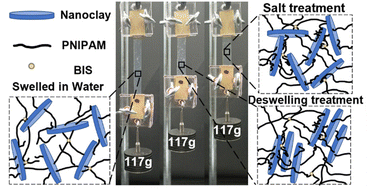
Nanoscale, 2022,14, 17887-17894
https://doi.org/10.1039/D2NR05408F
Incorporating zeolitic-imidazolate framework-8 nanoparticles into kidney scaffolds: a first step towards innovative renal therapies
We demonstrate the successful immobilization of polymer-stabilized ZIF-8 nanoparticles within a kidney scaffold, endowing it with a high adsorption capacity to remove uremic toxins (mainly hydrophobic ones) under flow conditions.

Nanoscale, 2022,14, 17543-17549
https://doi.org/10.1039/D2NR04246K
One-dimensional metal thiophosphate nanowires by cluster assembly
The nanowires assembled from [PS4] clusters and group-IIIA or transition metal atoms with unique structural symmetry show diverse electronic and magnetic properties.

Nanoscale, 2022,14, 16427-16435
https://doi.org/10.1039/D2NR03770J
Controllable fabrication of hollow In2O3 nanoparticles by electron beam irradiation
A growth strategy is presented for controllable fabrication of hollow In2O3 nanoparticles via oxidation of In nanocrystals under electron beam irradiation.
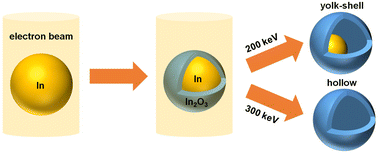
Nanoscale, 2022,14, 12569-12573
https://doi.org/10.1039/D2NR03276G
The lipidomic profile of the nanoparticle-biomolecule corona reflects the diversity of plasma lipids
Our work highlights the importance of multi-omics to comprehend the multi-molecular composition of the nanoparticle biomolecule corona and paves the way for the corona-enabled enrichment of blood-circulating disease-specific lipids.

Nanoscale, 2023,15, 11038-11051
https://doi.org/10.1039/D2NR05982G
Self-limiting stoichiometry in SnSe thin films
Raman spectroscopy showing the initial formation of SnSe2 followed by the stabilization of SnSe with increased growth time.

Nanoscale, 2023,15, 9973-9984
https://doi.org/10.1039/D3NR00645J
Vertical van der Waals heterojunction diodes comprising 2D semiconductors on 3D β-Ga2O3
Vertical heterojunctions based on 3D wide band-gap semiconductor, β-phase Ga2O3 and 2D layered semiconductors are demonstrated. Effects of 2D semiconductor, contact metals and β-Ga2O3 crystalline orientation on junction performance are investigated.

Nanoscale, 2023,15, 9964-9972
https://doi.org/10.1039/D3NR01987J
High-speed nanoscale optical trapping with plasmonic double nanohole aperture
By harnessing thermal gradients generated in aperture plasmonic cavities and using an AC field, plasmonic double nanohole aperture tweezers can rapidly trap nanoscale particles within seconds.

Nanoscale, 2023,15, 9710-9717
https://doi.org/10.1039/D2NR07073A
Defect-free graphene enhances enzyme delivery to fibroblasts derived from patients with lysosomal storage disorders
Biocompatible cationic graphene flakes efficiently complex and deliver the enzyme to the lysosomes of the fibroblasts derived from the patients with Mucopolysaccharidosis VI, leading to enhanced degradation of the accumulated lysosomal substrate.

Nanoscale, 2023,15, 9348-9364
https://doi.org/10.1039/D2NR04971F
Ultraflexible two-dimensional Janus heterostructure superlattice: a novel intrinsic wrinkled structure
The recently reported two-dimensional Janus transition metal dichalcogenide materials based assembled heterostructure superlattice presents ultra-stretchable characteristic using as nanodevices.

Nanoscale, 2023,15, 8654-8661
https://doi.org/10.1039/D3NR00429E
A first glance into mixed phosphine–stibine moieties as protecting ligands for gold clusters
[Au6(SbP3)2][PF6]2: the first gold nanocluster protected by multidentate coordination of stibine (Sb) and phosphine (P) moieties.
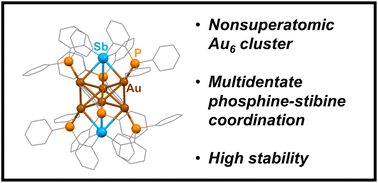
Nanoscale, 2023,15, 6934-6940
https://doi.org/10.1039/D2NR05497C
Theoretical screening of single atom doping on β-Ga2O3 (100) for photoelectrochemical water splitting with high activity and low limiting potential
Photoelectrochemical (PEC) water splitting combined with renewable energy is an appealing approach for solar energy conversion and storage.
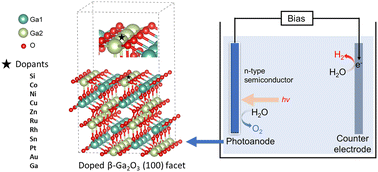
Nanoscale, 2023,15, 6913-6919
https://doi.org/10.1039/D3NR00149K
Piezoelectrically enhanced photocatalysis of KxNa1−xNbO3 (KNN) microstructures for efficient water purification
A kind of perovskite-type potassium–sodium niobate K0.4Na0.6O3 synthesized via a facile hydrothermal reaction exhibits excellent piezo-/photocatalytic properties under the synergistic effect of light irradiation and ultrasonic vibration.
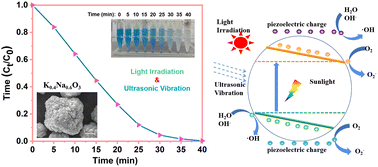
Nanoscale, 2023,15, 6920-6933
https://doi.org/10.1039/D2NR07311K
Non-invasive monitoring of biochemicals in hydrogel-assisted microfluidic chips
A hydrogel acts as the sealing film of microfluidic chips, and allows the delivery of target biochemicals to the outer surface for various types of quantitative analysis.
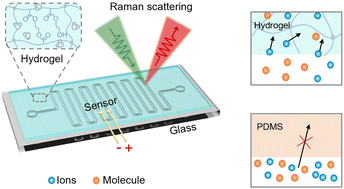
Nanoscale, 2023,15, 6179-6186
https://doi.org/10.1039/D2NR06042F
Effects of film thickness on electrochemical properties of nanoscale polyethylenedioxythiophene (PEDOT) thin films grown by oxidative molecular layer deposition (oMLD)
Orientation of ordered domains in oMLD PEDOT thin films changes with thickness, affecting ion uptake rate and electrochemical device applications.
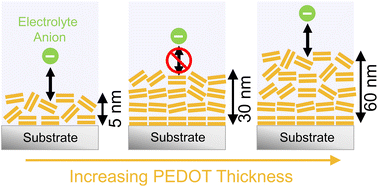
Nanoscale, 2023,15, 6187-6200
https://doi.org/10.1039/D3NR00708A
Scalable and green formation of graphitic nanolayers produces highly conductive pyrolyzed paper toward sensitive electrochemical sensors
The annealing of pyrolyzed paper (PP) under isopropanol vapor leads to the formation of highly graphitic nanolayers (∼15 nm) on the material surface. PP electrodes with a resistivity as low as 7 mΩ cm could be achieved for sensing applications.
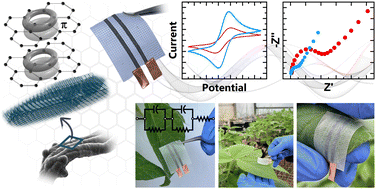
Nanoscale, 2023,15, 6201-6214
https://doi.org/10.1039/D2NR07080D
About this collection
Nanoscale is proud to present this themed collection highlighting 2023’s rising stars of nanoscience and nanotechnology research, which gathers the very best work from researchers in the early stages of their independent career.
Each contributor was recommended by experts in their fields for carrying out work with the potential to influence future directions in nanoscience and nanotechnology. Congratulations to all the featured researchers on their important work in the field so far!